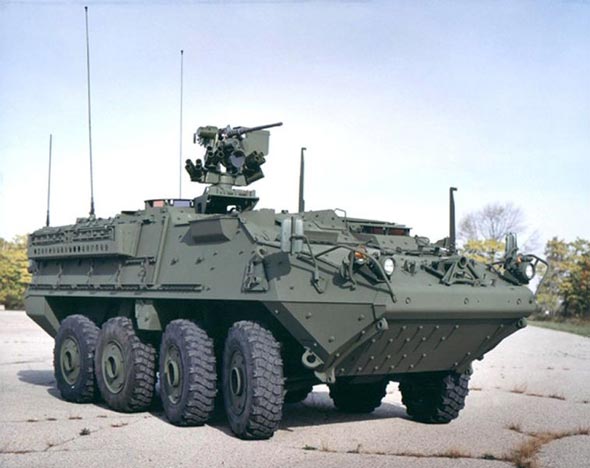Schiebel Group
Canada to Deploy 20 Recently Upgraded Leopard 2A4M to Afghanistan
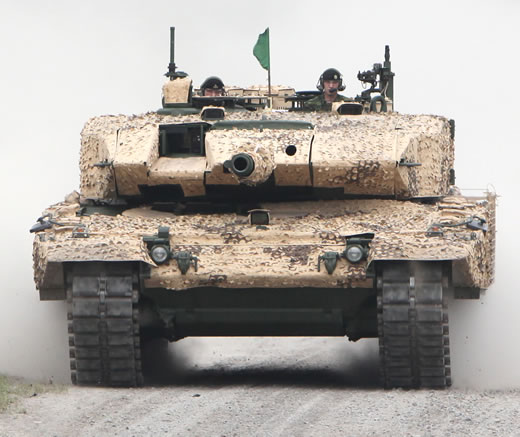
Krauss-Maffei Wegmann (KMW) is modernizing the Canadian Leopard 2A4 CAN tanks previously acquired from Dutch Army surplus. The first batch of 20 tanks was handed back to the Canadian Armed Forces yesterday (October 7, 2010) at the Bergen training ground in northern Germany. The modernized tanks are scheduled to deploy with the Canadian tank squadron positioned near Kandahar, southern Afghanistan.
The Canadians embarked on this latest upgrade of the tank in July 2009, anticipating their next deployment in the Afghan theater. The new version is specially designed for operations in Afghanistan based on experience gained by other Leopard 2 operators, including the Denmark and Canadian forces. (operating the Leopard 2A6M)

The main focus of the A4M CAN design was consistent protection of the crews, who are subjected to enemy attacks with powerful anti-tank projectiles and are in constant danger from mines and IED’s (Improvised Explosive Devices). The starting point for the protection concept is outstanding protection from mines and good all-round protection. Furthermore, the capabilities of the new battle tank have been significantly extended by integrating a pioneer equipment interface. Mine rollers, mine ploughs and dozer blades allow the Canadian tanks to effectively negotiate obstacles on rough terrain. the tank is fitted with full electric drive, which has already been used on more advanced models.
The Leopard 2 is the heaviest, most powerful direct land combat system operated under ISAF command. Unlike many other systems, the tank can also operate and demonstrate its strengths in extremely dangerous environments and can also do this over long periods of time if necessary. Forces employing the tanks are able to carry out a wide range of tasks exposed to extremely dangerous environment, in spite of the small number of heavy vehicles. Currently the tanks are operated primarily in the northern areas; provisions have also been made for deployment in the extreme heat of southern Afghanistan.
With its armour, which goes far beyond that of any other battle vehicle, its speed, its agility and its precise and extremely effective weaponry, the tank has a tremendous amount of deterrent potential as far as the enemy is concerned, while strengthening the morale of the troops.

Stryker Armored Personnel Carrier
Stryker, a family of eight-wheel-drive combat vehicles, is the Army’s highest-priority production combat vehicle program and the centerpiece of the ongoing Army Transformation. Stryker can travel at speeds up to 62 mph on roads with a range of 312 miles. Stryker operates with the latest C4ISR equipment and an integrated armor package protecting soldiers against improvised explosive devices, rocket propelled grenades and a variety of infantry weapons. Stryker’s current combined fleet operational readiness rate is 96 percent with more than six million miles accumulated through two completed Operation Iraqi Freedom rotations. To augment its protection against RPG attacks, the Stryker vehicle was equipped with a slat-armor cage as an intermediary protection. Further upgrades include reactive armor modules, currently in development under a US$6.7 million US Army contract awarded Sept 15, 2006. The delivery of the reactive armor kits is expected by March 2007.
To support future Stryker upgrades, primarily for the integration into the “Stryker Warrior” and follow-on future combat system architecture, General Dynamics Land Systems is developing a new Power and Data Management Architecture (PDMA) to support future Stryker upgrades and improvements. PDMA system will provide the Stryker with the power and processing capability needed to deploy enhanced integrated capability for current fielded and future production Strykers. In October 2006 The company has been awarded a $3.3 million contract from the U.S. Army Tank Automotive Command TACOM for the initial 12 month phase of a development program which span over four years.
In September 2006 the U.S. Army ordered additional 109 Stryker wheeled combat vehicles from General Dynamics Land Systems, under three recent orders valued at US$155 million, increasing the Army’s fiscal year 2006 Stryker procurement to a total of 518 vehicles. Manufacturing of the new vehicles will be completed by October 2008. To date, General Dynamics has delivered more than 1,780 Strykers of the 2,691 included in the U.S. Army’s plans for seven Stryker Brigade Combat Teams.
GDLS is also producing the Light Armored Vehicles (LAV-A2) for the U.S. Marine Corps. The company was recently awarded a contract for $189 million for 151 of the improved A2 variants, as well as 394 conversion kits for existing LAV vehicles, modifying the turret with an electric drives to replace the hydraulic systems in existing vehicle’s turret, made by Delco.
Latrun 2010 Exhibition – Day II Photo Report
Our second daily coverage of the Latrun event focus on electro-optical devices shown here. Among many familiar systems, Defense Update has picked several new systems and developers, that have made their first steps in bringing their innovative EO systems to the market. Some are brand new, demonstrated as prototypes and proof of concept demonstrators while others are already fielded and operational, primarily with special operations units.




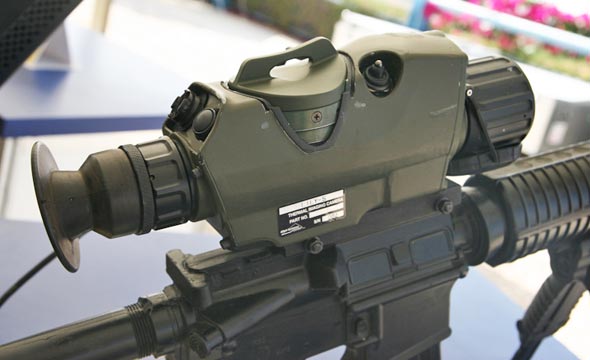

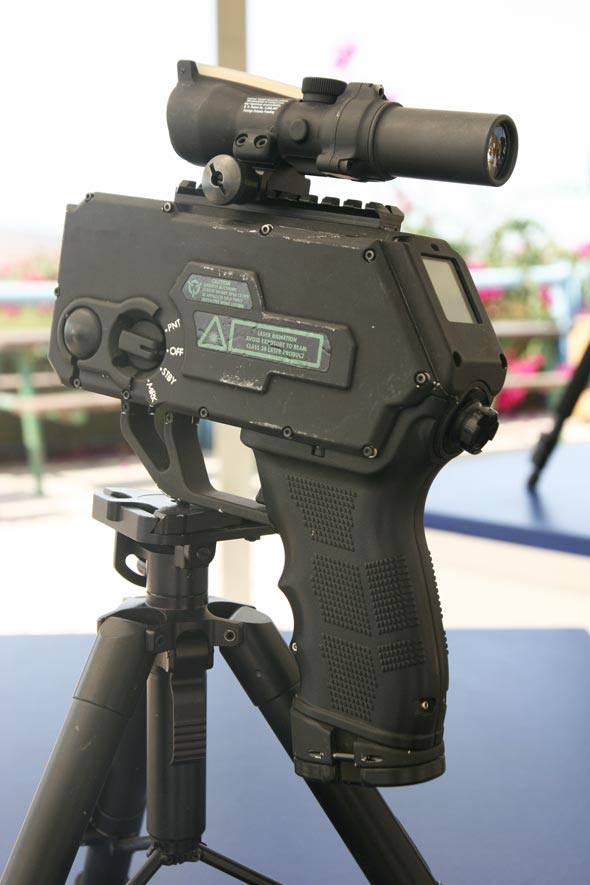

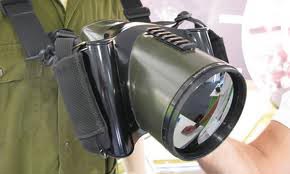
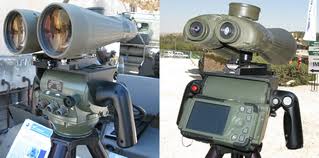
German Rheinmetall Waffen Munition Strengthen Manufacturing Foothold in South Africa
Anticipating a growth in the activity of its South African business, Rheinmetall Waffen Munition (RWM) has teamed with its South African based subsidiary with Denel – Rheinmetall Denel Munition (RDM) to acquire the Laingsdale Engineering company of Cape Town, South Africa, previously a division of Tellumat Pty Ltd. Under the new ownership RWM will have a majority interest of 51% in the new company, with RDM holding the remaining 49% share.
The company provides precision mechanical manufacturing related to fuses, safe-and-arming devices, kinetic energy weapons and a variety of naval applications. Laingsdale Engineering has about 180 employees and had sales in FY 2009 of approximately €10 million. The bulk of Laingsdale Engineering business is currently with RDM. The company expects to see its business volume double from the current figure. “We are excited about this acquisition which will enhance and grow our business in South Africa”, said Norbert Schulze, CEO of RDM. “We have acquired a highly successful company which we have been working with for many years and with great success.” The new skills and capability base it is acquiring in precision mechanical manufacturing will enhance Rheinmetall’s current indigenous ammunition products.
Latrun 2010 Exhibition – SIBAT Force Protection Focus Day

Following are first impressions from today’s exhibition at Latrun, Israel.

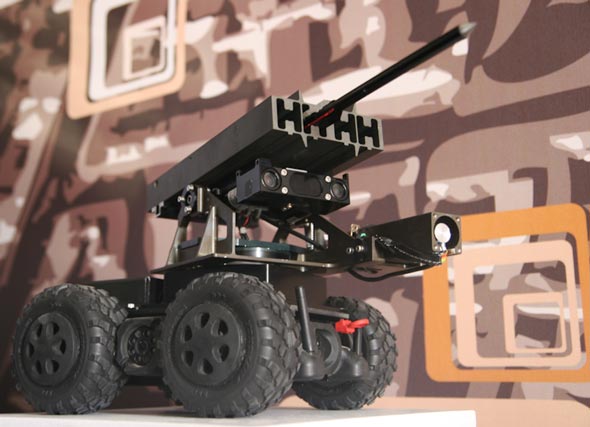

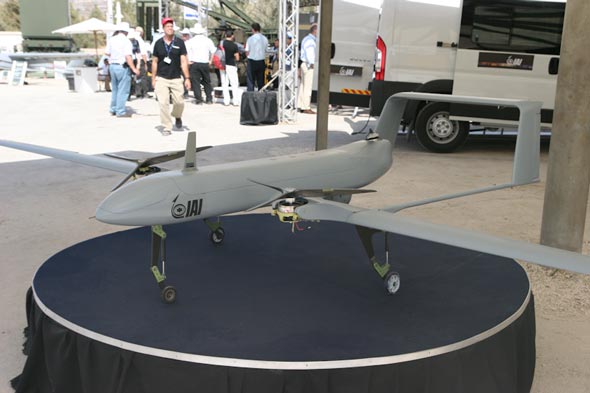

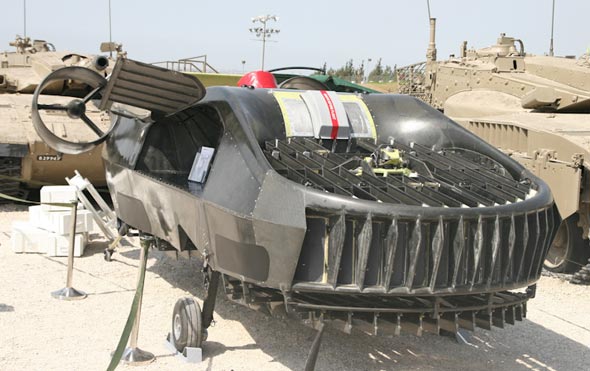



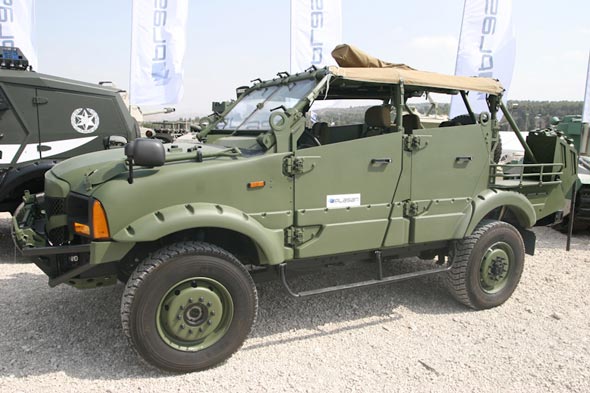
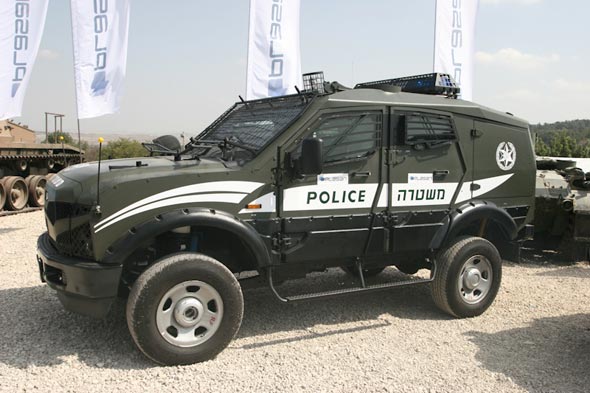



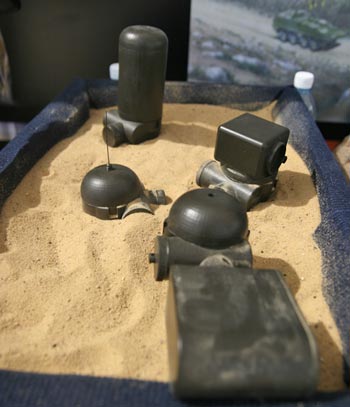
Air Force Research Lab Completes Ground Collision Avoidance Flight Tests on an F-16
The U.S. Air Force completed the final 103rd test flight in the testing for the Automatic Ground Collision Avoidance System (Auto GCAS), part of the Automatic Collision Avoidance Technology (ACAT) /Fighter Risk Reduction Program. Researchers hope the lessons learned during these tests will lead to the virtual elimination of fighter aircraft mishaps.
The cooperative program was conducted by the Air Force Research Laboratory (AFRL) in conjunction with the Air Force Flight Test Center and NASA Dryden. The Auto GCAS flight testing effort has collected data over the course of over 141 flight hours, with more than 1,600 automatic recoveries executed. The F-16 test aircraft will now be transitioned to the Air Force Flight Test Center 416th Flight Test Squadron, who will begin production flight testing in the next phase of the ACAT program. The Auto GCAS software was recently transitioned to Aeronautical Systems Center, with the goal of incorporating the system into F-16 production aircraft in 2014.

Auto GCAS technology uses information gathered from Global Positioning System data and incorporates it with Digital Terrain Elevation Data maps to enable aircraft to reference terrain below. In the event that an aircraft is flown dangerously close to the ground, this critical data enables the aircraft to automatically execute avoidance maneuvers without pilot intervention.
Onboard for the final test flight was Lockheed Avionics Design Engineer Charles Canney and NASA project pilot Nils Larsen. The flight took place over a widespread area including portions of California from Edwards Air Force Base to Death Valley and the peaks and canyons of the Sierra Nevada Range. The flight evaluated the ability of the system to fly at low levels without “nuisance fly-ups,” or unwarranted activations of the system. Additionally, the system’s collision avoidance capability was evaluated with the execution of numerous mishap profiles that are typically seen in the F-16 fleet.
Mr. Canney, who has served as part of the design team for Lockheed since 1989, flew aboard many of the collision avoidance runs throughout this testing effort. He described the final test flight as “the best flight anyone has ever had,” and stated, “As Nils got down low, I could see dirt being kicked up off of the desert floor and no nuisance activations.”
Remington to Upgrade Army M24 Sniper Rifles into XM2010 Weapon Systems
The U.S. Army’s PEO Soldier has awarded Remington Arms Company a contract for the modification of 250 M24 sniper rifles, a first batch of up to 3,600 M-24s to be modified into the XM2010 weapon systems – what the Army calls the M24E1 “reconfigured Sniper Weapon System”. The modified rifle is chambered for .300 Winchester Magnum cartridges, (originally the M-24 was designed for 7.62mm NATO .308 Winchester) significantly extending the weapon’s maximum effective range from 800 to 1,200 meters. The Army expects to begin fielding the upgraded weapons to deployed U.S. Army Snipers by the end of December 2010. The current upgrade is expected to sustain the XM2010 weapon system in service for at least 10 years and will serve as a precursor to future sniper systems. The value of the current award is $192,000 while the potential value of the entire program could reach $28.2 million
According to LTC Chris Lehner, Product Manager Individual Weapons at PEO Soldier, the program has matured within less than a year, through close cooperation between the Army and industry. “The XM2010 had pinpoint precision,” said SFC Robert Roof, NCOIC/Chief Instructor, United States Army Sniper School. “We were able to achieve shots well within the weapon’s capabilities both during limited visibility and during the day. The optics were clear and easy to use and the ergonomics of the weapon made it very comfortable to shoot.”
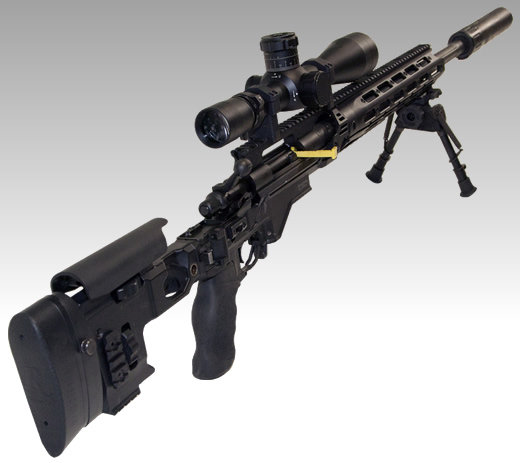
Besides the chambering to match the .300 Winchester Magnum cartridge, The M24 Sniper Weapon Systems upgrade comprises a Leupold Mark 4 6.5-20x50mm Extended Range / Tactical riflescope with advanced scalable ranging and targeting reticlel fielded with the AN/PVS-29 Clip-on Sniper Night Sight, and quick attach/detach suppressor to reduce audible and visible signature with an available thermal sleeve that reduces mirage effect on heated suppressors. The weapon uses a five-round box magazine, offering easier load and reload with the additional option to change out ammunition quickly. Each modified M-24 rifle has also gets rail endowed chassis and free floating barrel that allow for easier mounting of weapon accessories and greater accuracy, a folding and adjustable stock that includes comb and length-of-pull adjustments.
Raytheon Expands Cybersecurity Portfolio with the Acquisition of ‘Technology Associates’
The Raytheon Company has acquired Technology Associates Inc., a privately held supplier to the U.S. intelligence community, providing system engineering support for mission-critical programs. Technology Associates’ capabilities include data extraction and analysis; digital media intercept and exploitation; embedded system programming; and information assurance services. Based in Reston, Va., Technology Associates was established in 1990 and has 110 employees.
Technology Associates will become part of Raytheon’s Intelligence and Information Systems (IIS) business. Technology Associates President Preston Harrelle joins Raytheon and will continue to lead business operations while taking on a broader cyberstrategy role across the Information Security Solutions (ISS) product line. “By acquiring Technology Associates and integrating its talent and expertise into our business, we’ll further strengthen our ability to meet the evolving needs of our customers.” Lynn Dugle, president of Raytheon IIS commented.
ManTech to Operate Expeditionary Surveillance Sensors Supporting the U.S. Army in Iraq

As combat U.S. forces in Iraq convert from combat to ‘advice and assist‘ missions, some missions formerly carried out by the military are handed over to civil contractors. A key force protection security mission handed over recently is the operation of perimeter and remote sensors employed around forward operating bases in Iraq. These Base Expeditionary Target Surveillance Systems-Combined (BETSS-C) will now be operated by civil contractors, under a $70 million contract awarded to ManTech through U.S. Army’s Project Manager Night Vision/Reconnaissance, Surveillance and Target Acquisition (PM NV/RSTA). The recently announced contract covers the next 12 months, at a total amount of US$70 million.
BETSS-C enhances perimeter surveillance, battle command and force protection at joint security stations, forward-operating bases and combat outposts throughout Iraq. The system provides commanders with a digital map display of video, images and other information from ground sensors, pan-tilt-zoom cameras, mid- and long-range electro-optical/infrared sensors and radar mounted on towers, aerostats and other unmanned airborne vehicles.
“ManTech’s superior communications and electronics expertise, coupled with our extensive in-theater operations support experience will be a valuable asset to the BETSS-C program,” said Louis M. Addeo, president and chief operating officer of ManTech’s Technical Services Group. “We are proud to continue our support of the U.S. and coalition mission in Iraq.”
Related posts:
Dyneema HB80 Composite Material Selected for the U.S. Forces’ Improved Combat Helmet
DSM Dyneema has been awarded a contract for the development of an improved combat helmet based on advanced Ultra-high-molecular-weight polyethylene (UHMWPE) material solution. DSM Dyneema has been focusing on research and development of new UHMPWE series of materials to substantially lighten the load for military and law enforcement. As part of the contract the company will develop new unidirectional (UD) materials suitable for the improved combat helmet next generation improved combat helmet application, offering superior ballistic performance at lower weight.
The company launched the Dyneema HB80 in June 2009. Initially known as Prototype Dyneema X31, this UD composite material has undergone extensive ballistic and secondary property testing, demonstrating the potential to significantly lighten the load carried by soldiers, providing greater comfort and mobility for soldiers wear protective gear. HB80 offers over the highest ballistic performance on the market today. With 35 percent greater protection against fragmentation threats and its advanced ballistic properties, SWAT helmets made of HB80 could be produced with half the weight of today’s models. This material has now been selected for both body and vehicle armor applications where ultra-light weight and enhanced performance are required.
The HB80 has been extensively tested and evaluated in different helmet constructions and is currently in the final development testing phase of ECH program. The ECH will use manufacturing techniques different from those associated with resin-impregnated para-aramids while the UHMWPE uses advanced thermoplastic processing.
According to DSM Dyneema the company is already working with all major helmet manufacturers involved in the Enhanced Combat Helmet (ECH) program. Unlike previous models made of Kevlar, Improved versions of the ECH will employ the high tech UHMWPE developed specifically to address the requirements of the U.S. Army and Marine Corps. The program is a joint PEO Soldier/Marine Corps Systems Command developmental effort that will provide increased protection against ballistic and fragmentation threats. Previous reports about the ECH mentioned that the new lightweight helmet will match or exceed the ballistic fragmentation resistance of current helmets offering a significant weight reduction of approximately 20%, which means above 0.5 pounds as compared to the older designs (reference).
IAI Introduces: Panther UAV – Electrically Powered Tilt-Rotor VT-UAV
Israel Aerospace Industries(IAI) is unveiling two new unmanned systems, representing a breakthrough in Vertical Take off and Landing (VTOL) unmanned aerial vehicle (UAV) designs. Both designs, named Panther and Mini-Panther employ a new tilt-rotor propulsion concept patented by IAI. Both are designed for tactical use. The Panthers have already performed test flights and are expected to operational ready next year. The new Panther will be displayed tomorrow in Latrun, Israel

Panther combines the flight capabilities of fixed wing airplane with helicopter-like hovering, takeoff and landing, by employing two tilt-rotor propellers, and a vertical lift augmenter propeller providing additional lift for hovering, takeoff and landing. This configuration enables the Panther to be runway-independent, taking off and landing from unprepared areas. This unique, concept can be applied to UAVs of different sizes, providing land forces and special operations units at tactical level the capabilities commonly associated with much larger platforms.
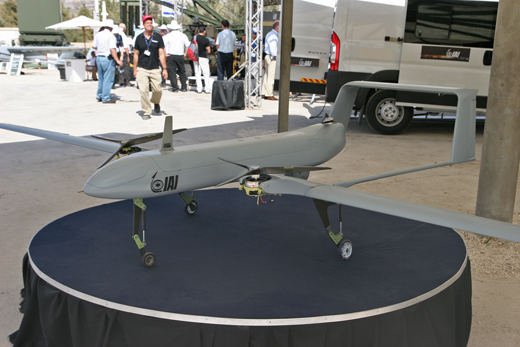
Weighing about 65 kg, the Panther is powered by three electrical motors and packs sufficient power to loiter on missions of up to six hours at an altitude of 10,000 ft. At this altitude operational radius can exceed 60 km. The Panther carries IAI’s MiniPOP multi-sensor electro-optical day-night payload comprising stabilized day and night cameras, laser rangefinder, laser pointer or laser designator. The smaller Mini-Panther is a 12 kg tilt-rotor mini-UAV designed for mission endurance of two hours. This version operates at lower altitudes and carries the miniature ‘Micro-POP’ EO stabilized payload. Both versions are powered by ultra-quiet electrical motors contributing to the Panther’s stealth capability. The Panther’s flight control system is enhanced with automatic transition flight modes controlling the transitions between hovering and forward flight, enabling the Panther to take off and land automatically by a simple click of the operator console, thus eliminating the need for an external pilot.
The Panther system employs compact ground control station and support systems packed into a midsize vehicle, storing up to three aircraft, communications datalink, and support equipment, allowing tactical units an autonomous operation. The ground control segment has two operators, using two fully redundant and identical consoles. The two consoles are employed for maximum mission efficiency – according to IAI, the Panther can be operated by a single operator as well. Designed as a portable system, the mini Panther includes two aircraft and a command and control unit carried by two soldiers. The Panther control station, transported on a midsize vehicle, can store up to three aircraft, as well as the ground data link, the support equipment and spare parts, all of which allow the troops’ autonomous operation on the field at a tactical level. Two operators control the mission using two fully redundant identical consoles. IAI is unveiling the Panther tilt-rotor tactical UAV tomorrow, at the Latrun Conference in Israel. IAI’s new UAV will make its international debut later this month, at the Association of the United States Army’s (AUSA) 2010 Annual Meeting and Exposition in the USA.

Saab Gets a Second Customer for Saab 2000 Erieye Airborne Early Warning (AEW) System
The Saab group has been awarded a contract to deliver an Airborne Early Warning & Control (AEW&C) system comprising the Saab 2000 aircraft platform equipped with the ERIEYE airborne early warning radar system. The contract comprises a Saab 2000 aircraft equipped with the advanced ERIEYE radar system, ground equipment, logistics and support services, to be delivered over a period of 4.5 years. The identity of the customer has not been released but it is assumed to be Saudi-Arabia. The number of aircraft to be delivered has not been released as well.

Earlier this year the UAE has ordered two smaller Erieye AEW systems based on the saab 340 platform. At the time official sources at the UAE explained the w340 is an interim solution, and that the country is still undecided on the long-term plans for its objective AEW capability, considering the Saab 2000, Boeing 737 and Northrop Grumman E-2D. Other nations in the region interested in acquiring AEW capability include Oman and Kuwait.
Another country that could be interested in such capabilities is South Africa where Saab sold the Gripen fighter aircraft and also operates local subsidiaries. In 2008 the use of Erieye was considered to bolster aerial surveillance and security during the World Cup games this year. However, the presence of such aircraft during the games was not reported. According to Saab, the Erieye airborne surveillance system in combination with the ground equipment provide a detailed picture of a situation which can be used in connection with, for example, border surveillance, rescue operations as well as in combating terrorism and organized crime.
“This contract can be seen as a further confirmation of our strong position in the world regarding not only the area of airborne surveillance but in systems integration and data fusion as well, says Håkan Buskhe,” CEO, Saab. “This surveillance system will provide the customer with improved solutions for defense and civil security.”
Saab’s ERIEYE radar is currently operated by the Swedish Air Force and Royal Thai Air Force and the UAE Air Force (on Saab 340 platforms). Brazil, Mmexico and Greece operate it on the Embraer 145 platform. The only Saab-2000 sofar is Pakistan.
Elbit Systems to Upgrade Asian Tanks with BMS, Optronics
Elbit Systems Ltd. announced today that it was awarded an approximately $56 million tank upgrade contract from a customer in Asia. The tank upgrade project will span over 24 months and include the installation of battle management systems (BMS), and optronic observation and surveillance systems. The current program is a follow-on upgrade Elbit Systems is conducting with this specific customer (the identity of the customer was not released).

It was reported in the Indian media that the Indian state owned DRDO is cooperating with Elbit Systems in the development of Battlefield Management System for the Indian indigenous Arjun tank. BMS integration could follow as part of the continuous Indian upgrades of the T-72M tanks and, and, possibly with the T-90S. Such BMS allows the tank to network with other fighting units, enabling several tanks to network with other each other, to effectively engage multiple targets. On the other hand, Azerbaijan has recently received 62 T-72 tanks from Russian military surplus. Azeri T-72s have already been updated with new fire control and remotely controlled weapon station.

